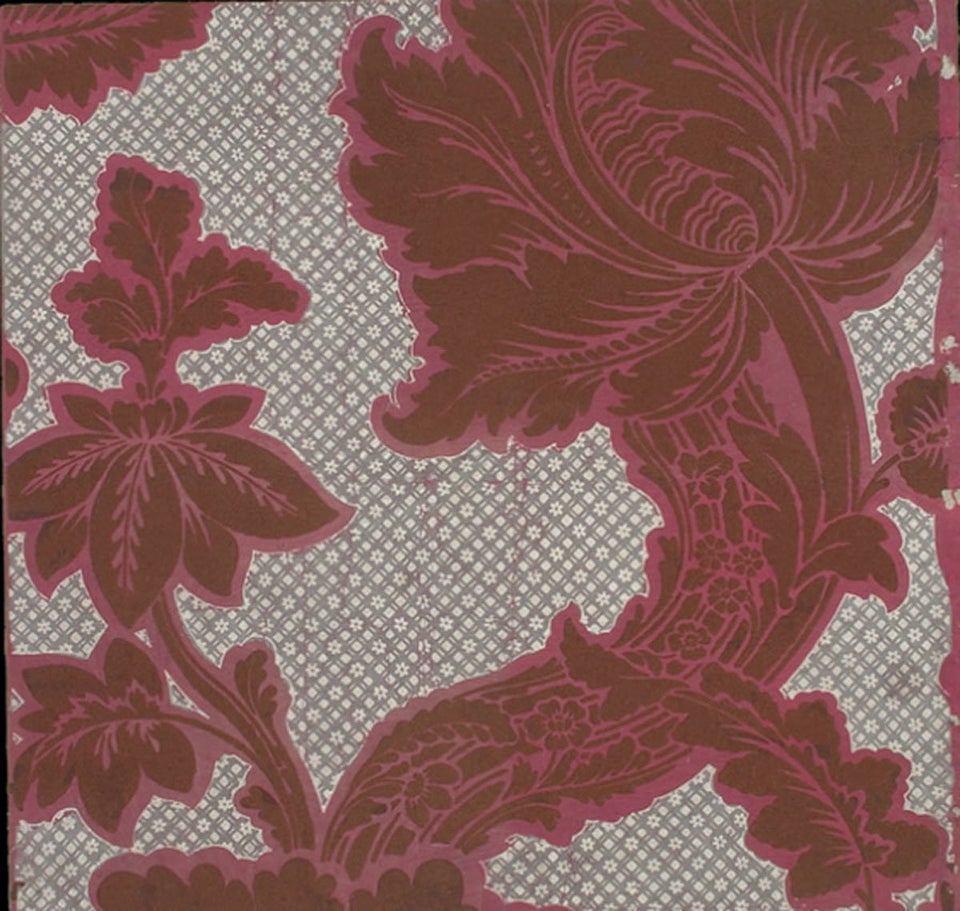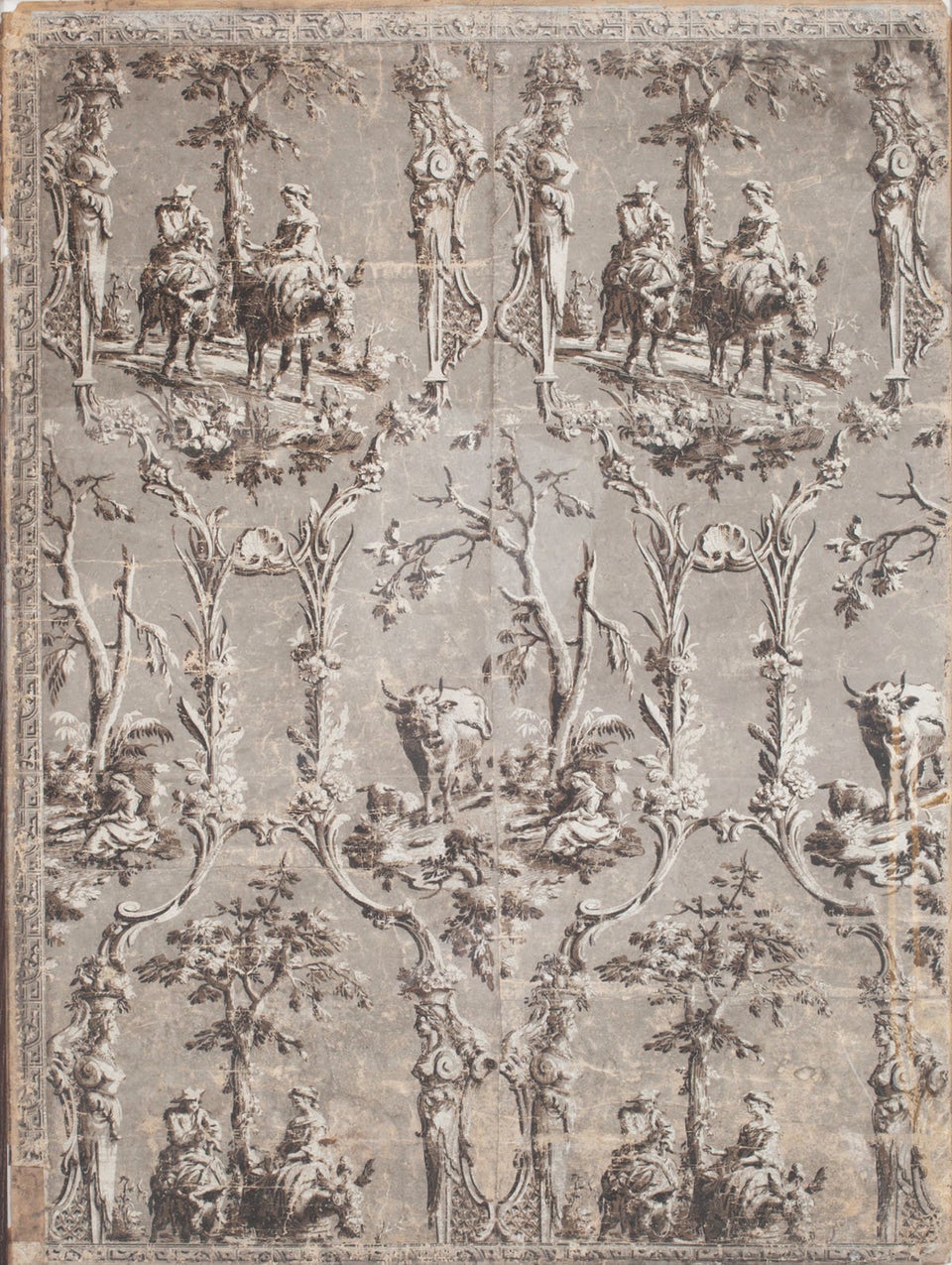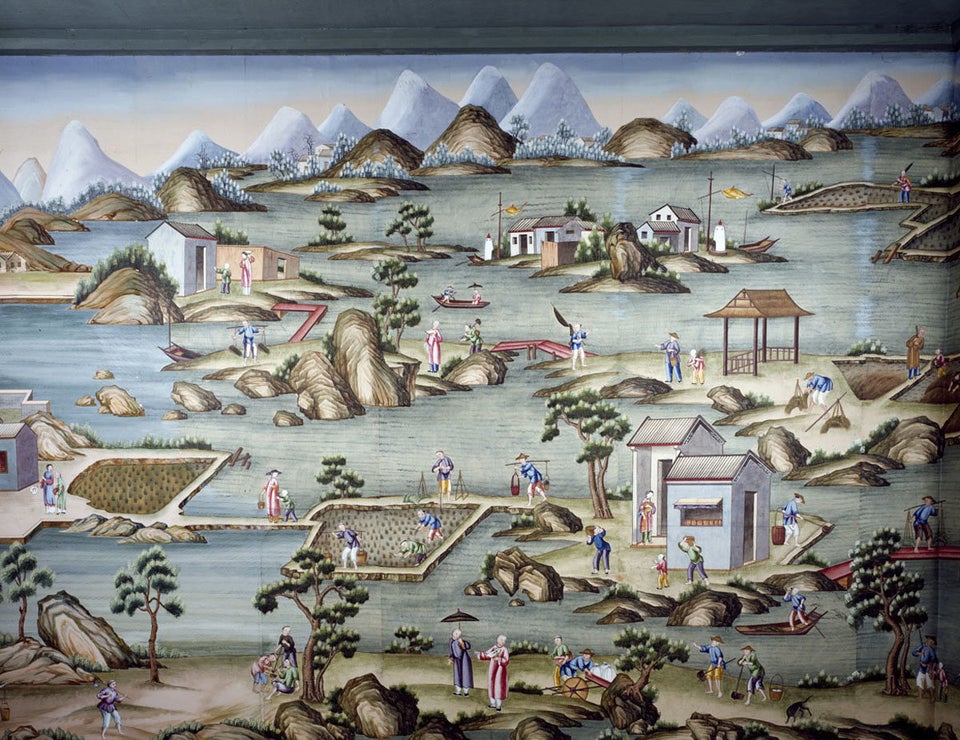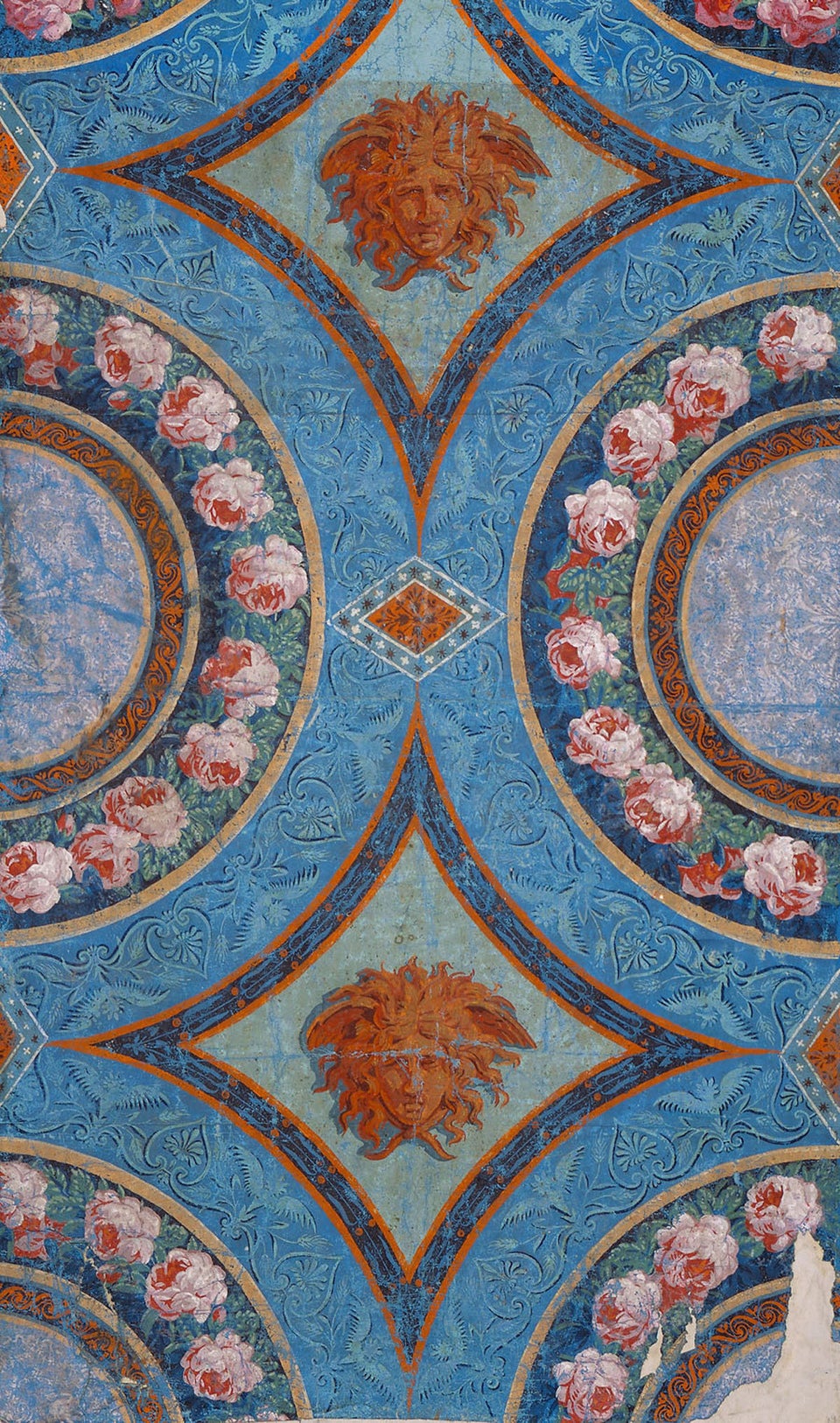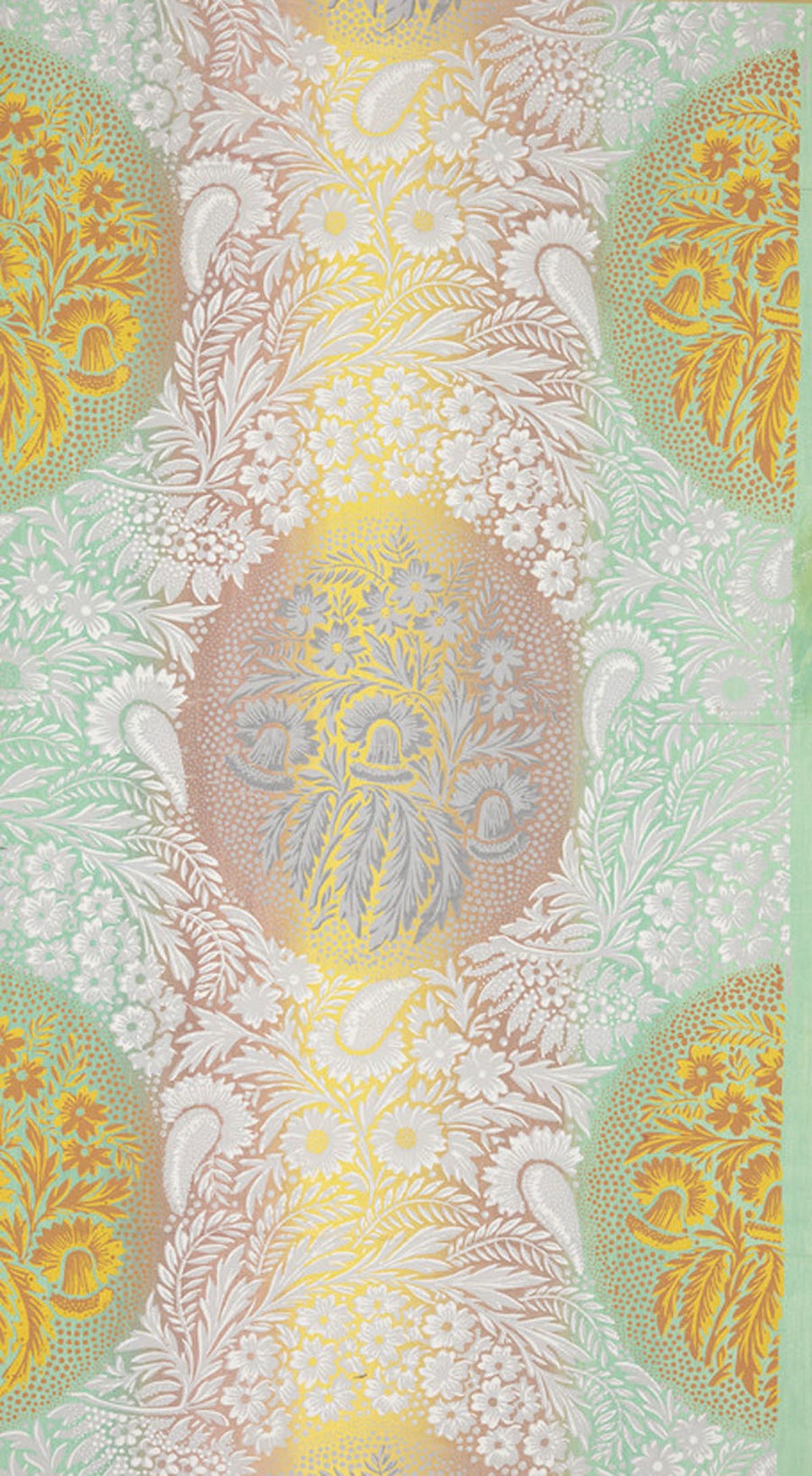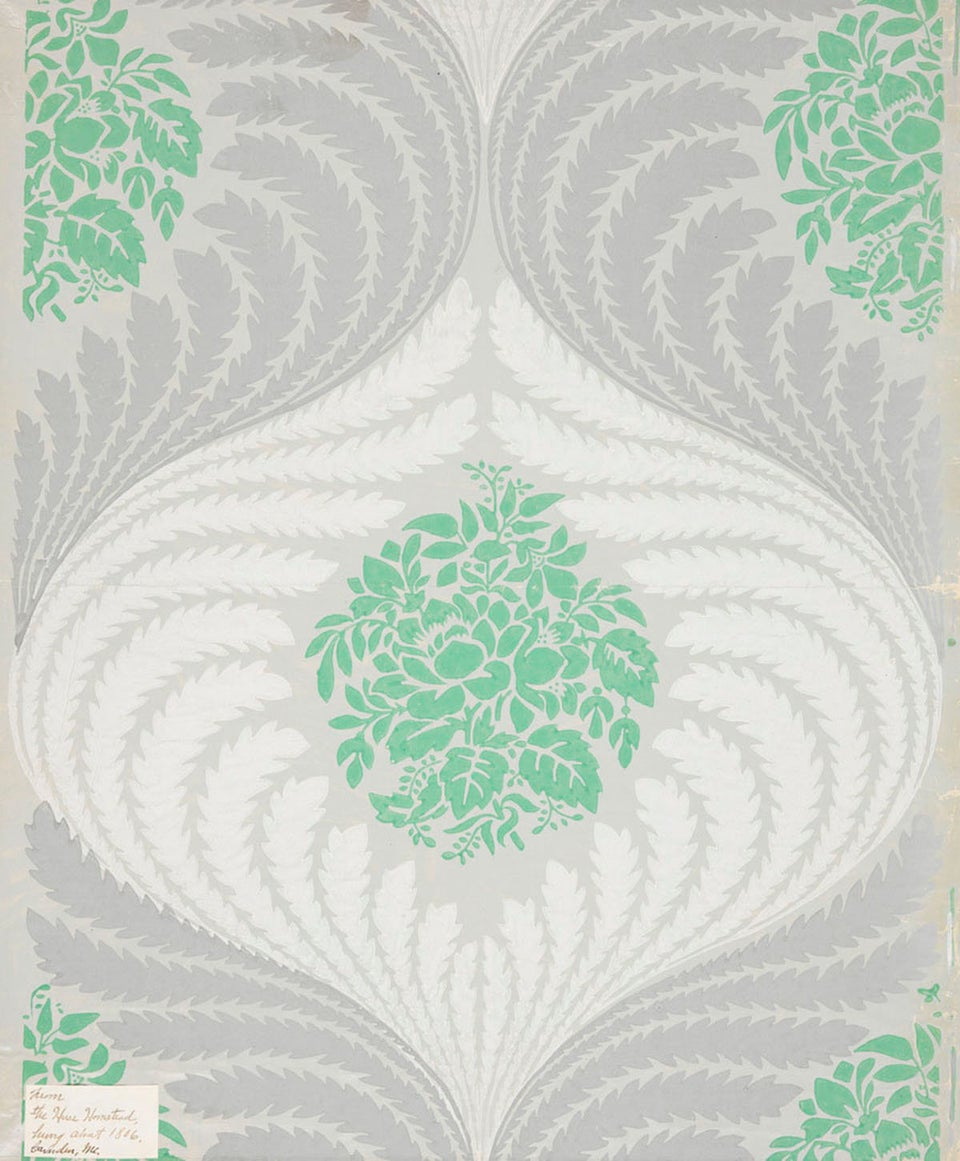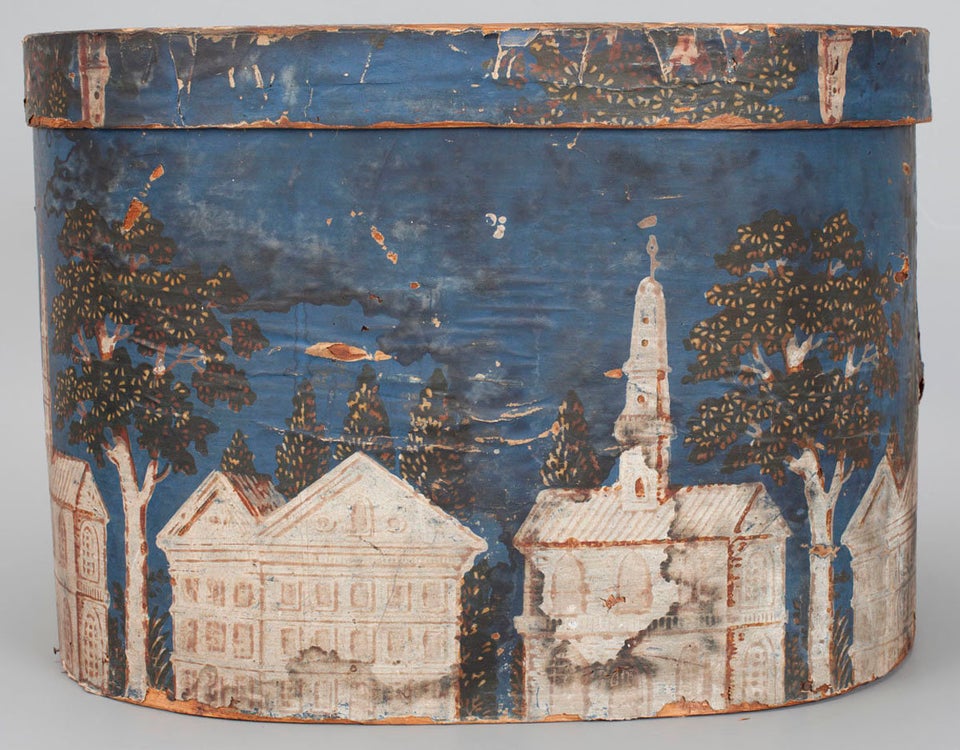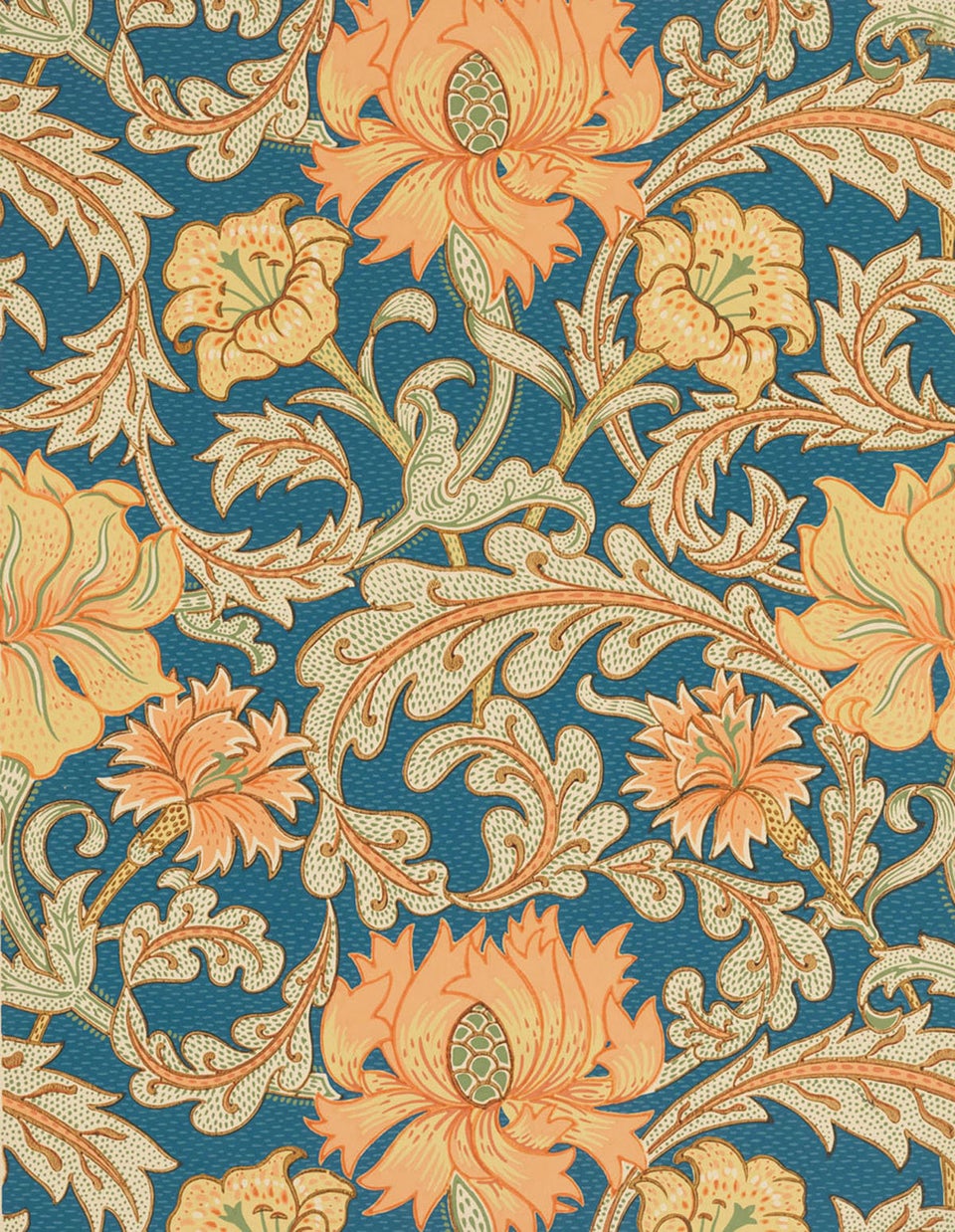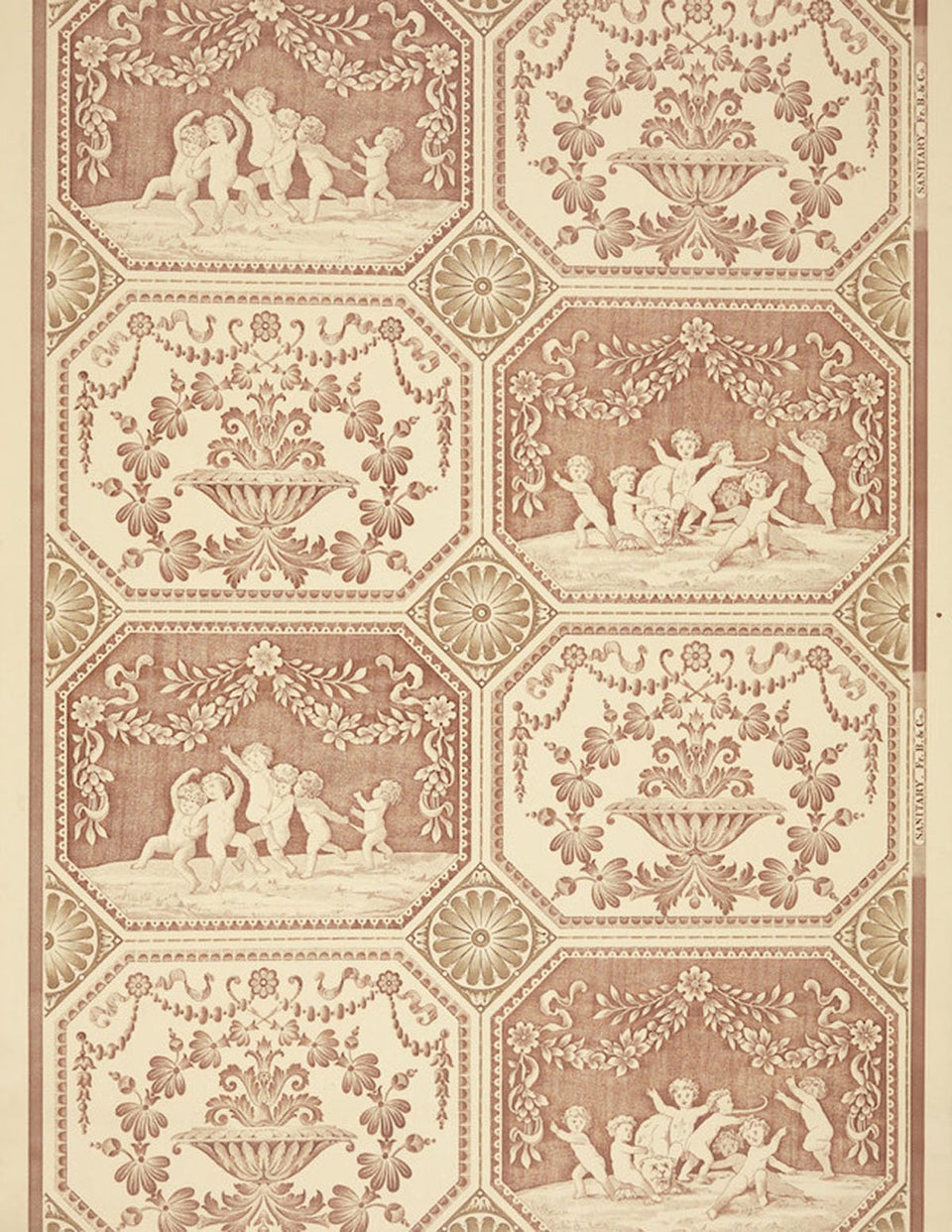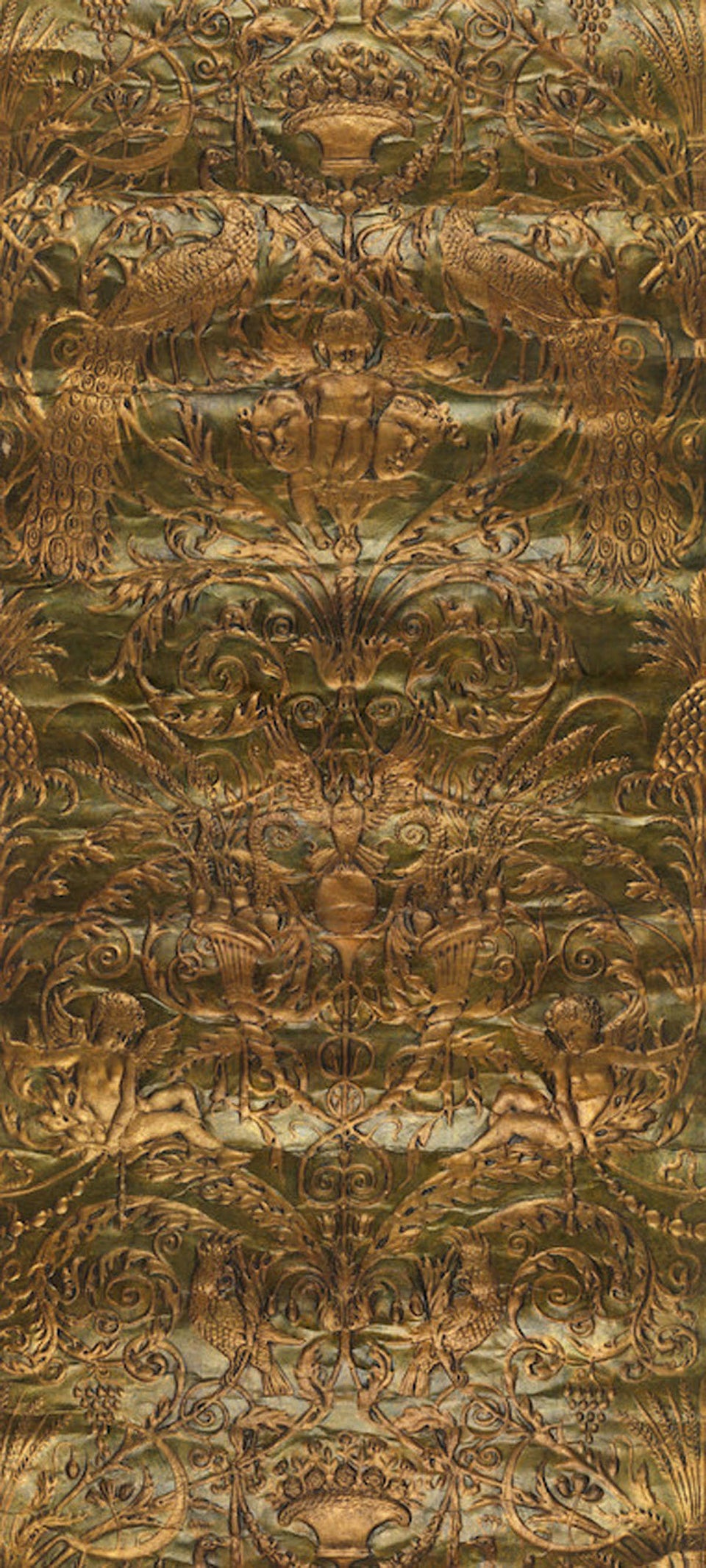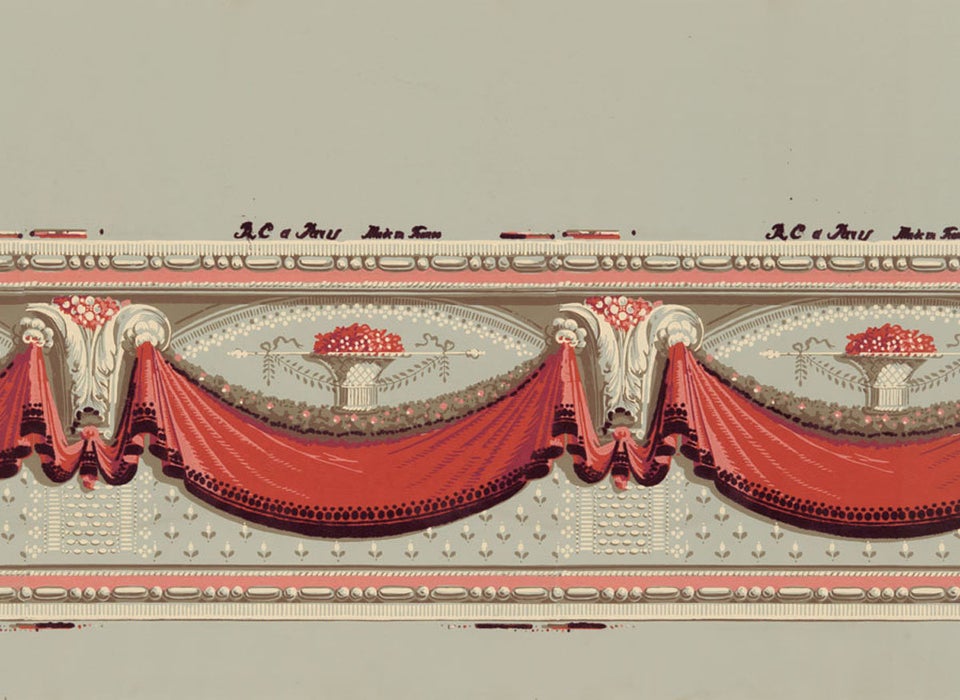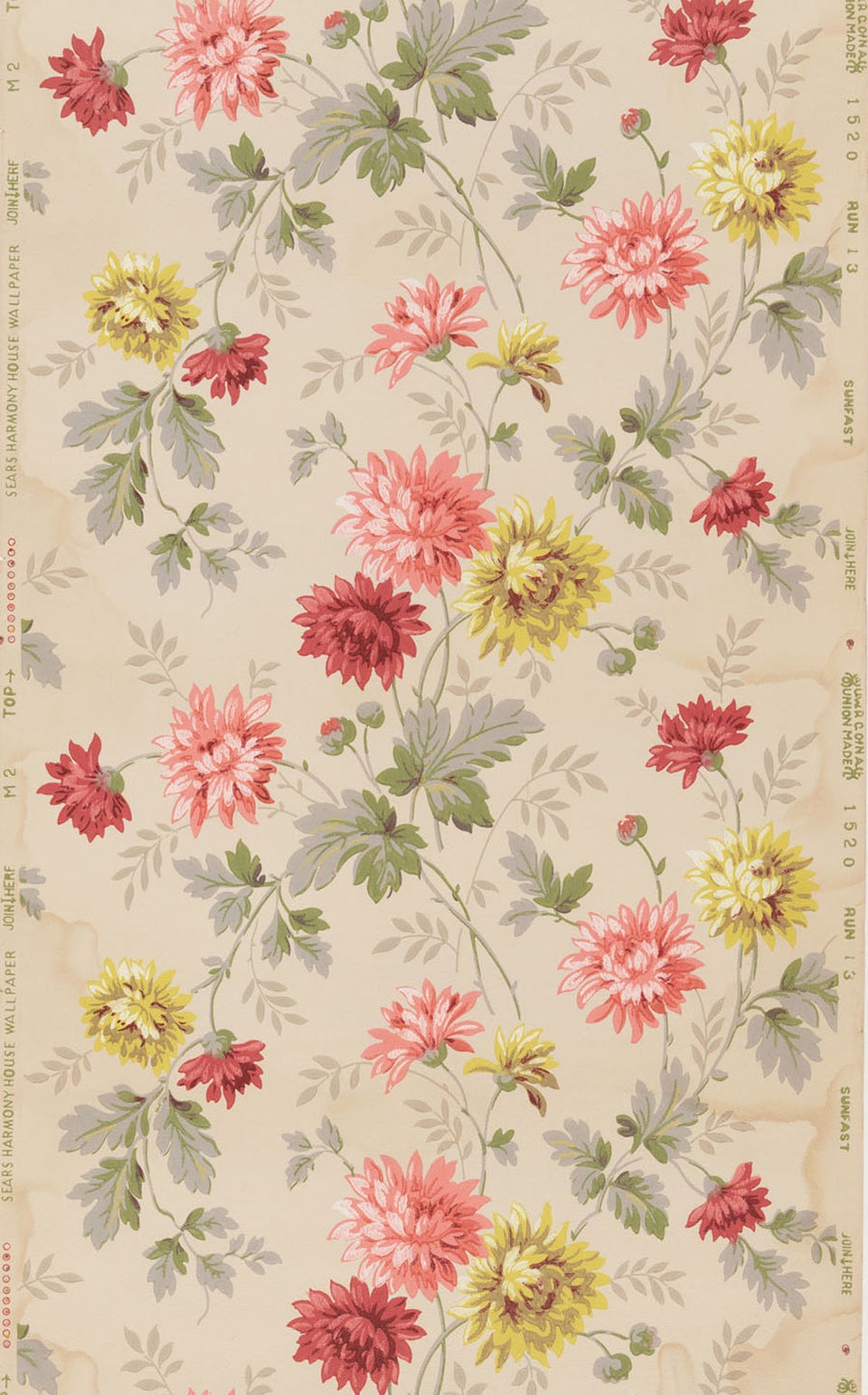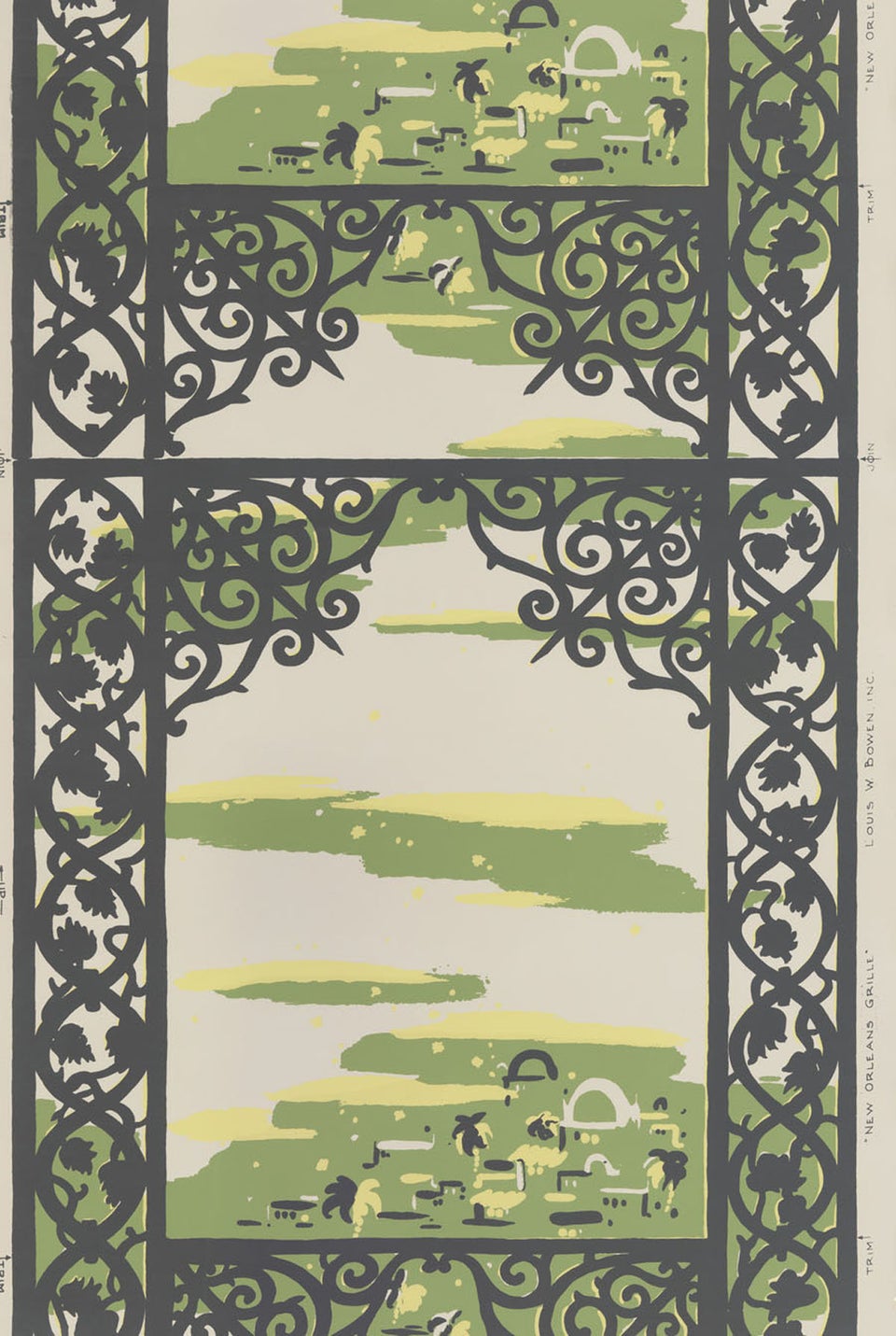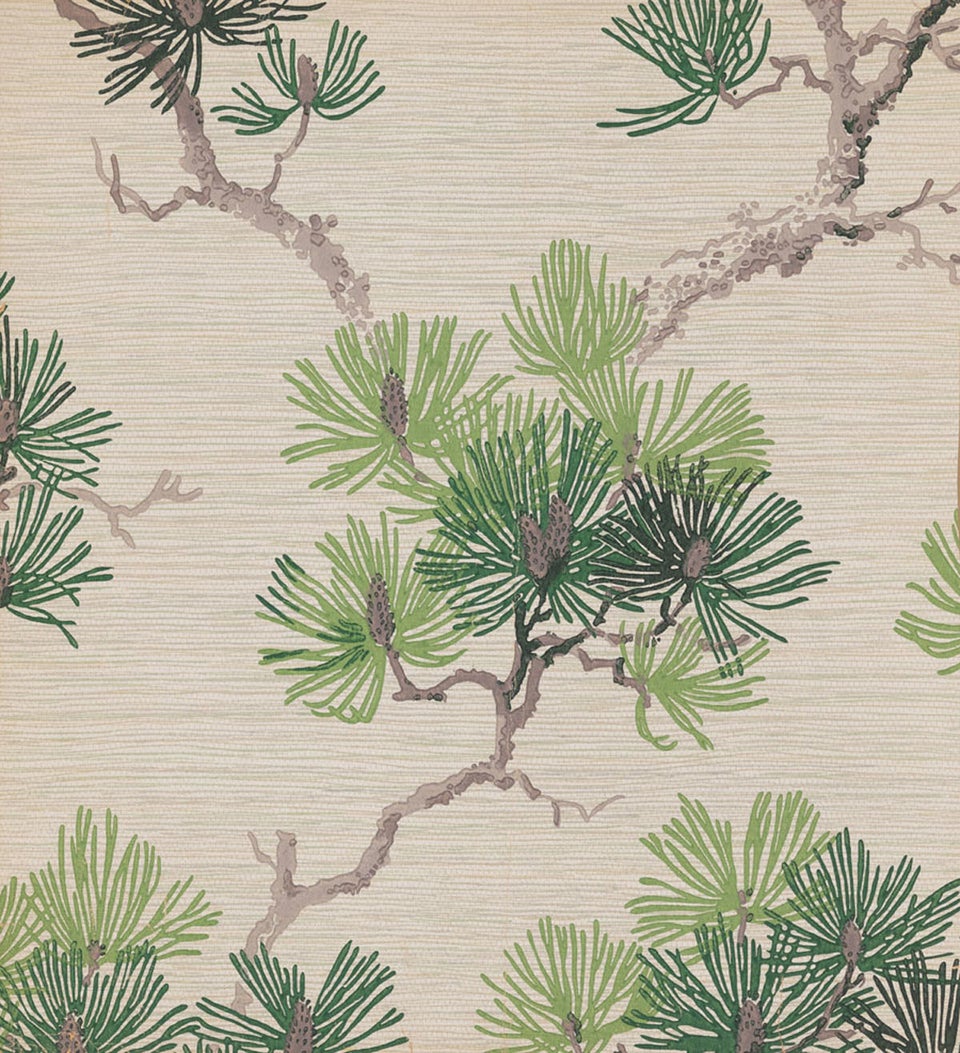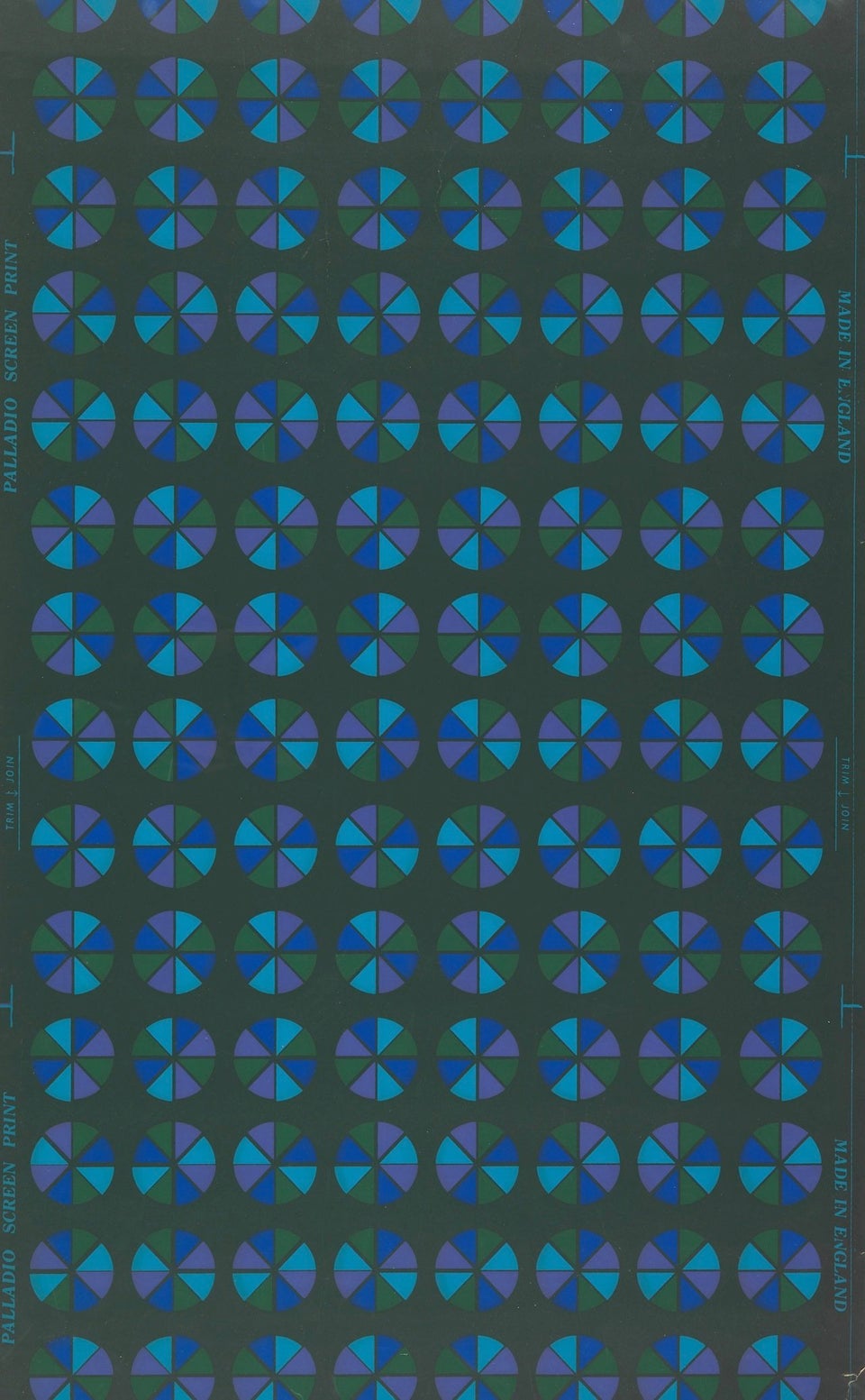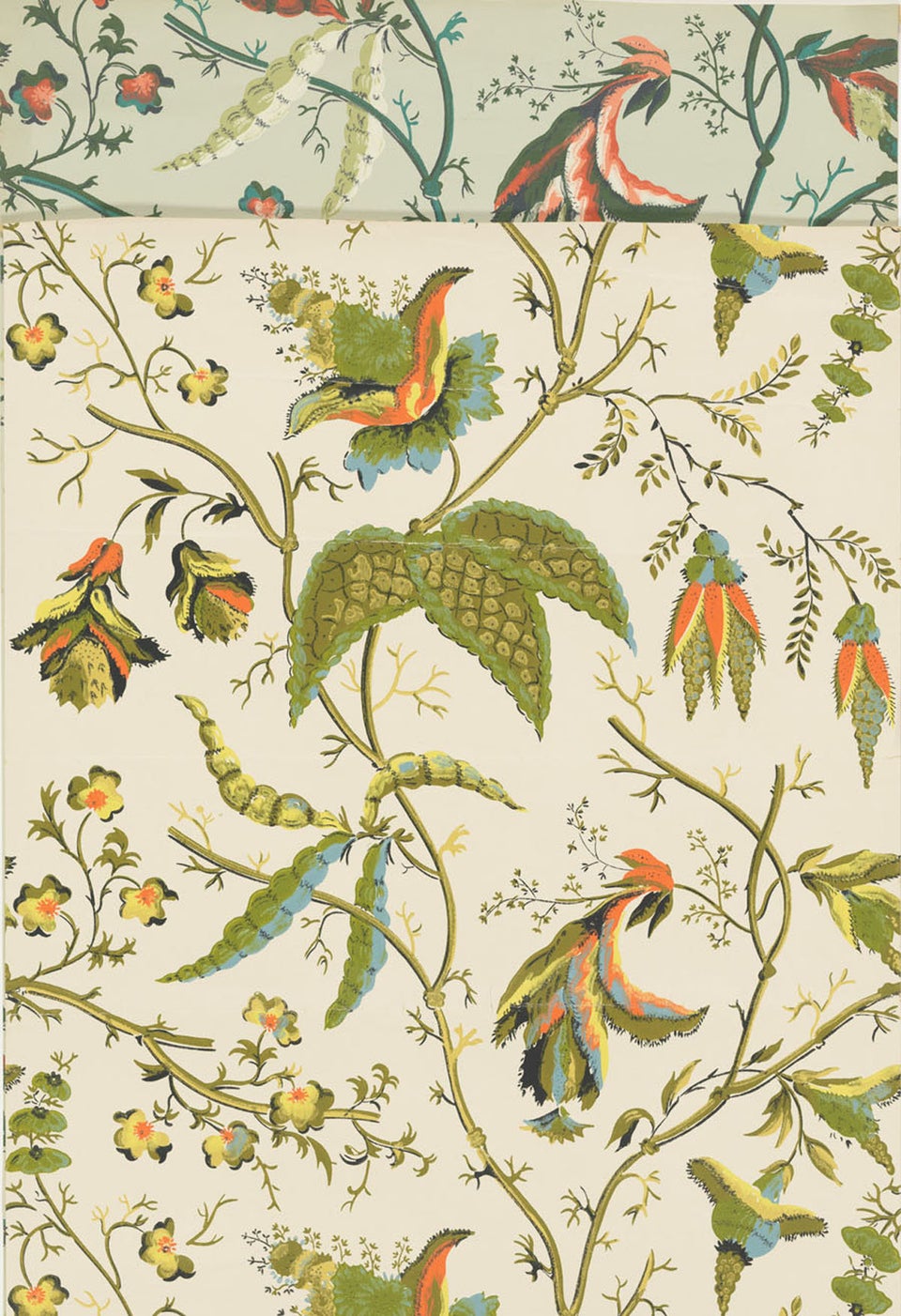Wallpaper, once the favorite daughter of interior design, is now more like the ugly stepchild. The late 20th century took a toll on the decorating medium that has roots in the early 1700s, bringing far too much paisley and visions of mustard yellow to the dens and foyers of homes past. Sure, modern iterations of the form have attempted to bring wallpaper back into fashion. But for the most part, we paint and we stencil, so the practice of pasting paper onto our kitchen and dining room walls has appropriately faded into design history.
Thankfully, there's a museum that cares about the untended wall art of yesteryear.
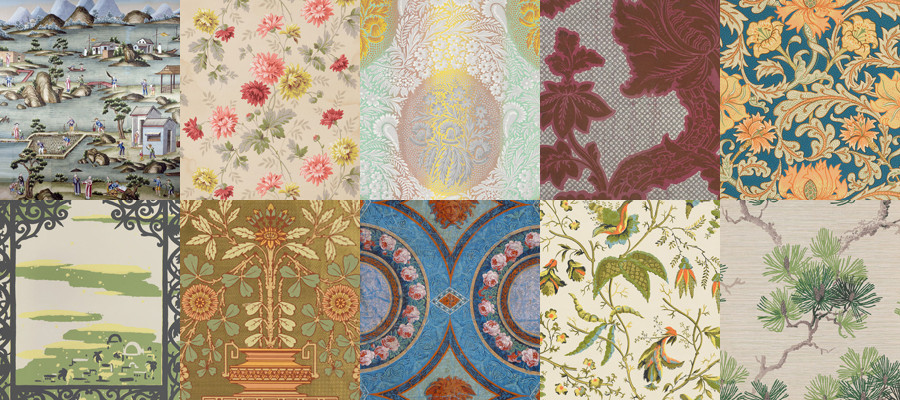
"Whatever you have in your rooms think first of the walls for they are that which makes your house and home, and if you do not make some sacrifices in their favour you will find your chambers have a kind of makeshift, lodging-house look about them…" -William Morris (1834-1896)
Enter the Historic New England, an institution that sought to bring 4,200 pieces of vintage wallpaper to the internet, making a collection of works dating from the 1750s to the 1950s accessible to the public. Since 2002, the inception of the project, the wallpaper collection has grown to over 6,000 pieces, which conservators at the Historic New England are tasked with repairing, correcting and treating for posterity.
The online database makes available a collection that covers three centuries, including pieces imported to the United States in the early days to William Morris designs to the real deal -- retro vinyl masterpieces. Some are in near-perfect condition, others are fragments of the magnificent wall adornments they once were. Whether the bits of ephemera have been plucked from scrapbooks, borders, bandboxes, fire-boards or scenic panels, they make up a unique archive that just wants to do one thing: build a wallpaper history.
For the uninitiated, wall paper (or "painted paper") became popular in New England in the early 1700s, sold by stationers, book sellers and specific merchants who specialized in "imported luxury goods." It was expensive at the time, made from leather and silk, sometimes wool and velvet, but it was an affordable decor element in comparison to other types of manipulating interior design (e.g. hand-painting and masonry).
By the mid-18th century, the floral patterns we've come to love had already made their way into design canon. Think Brocades and chintzes. French wallpaper manufacturers made great strides with block printing in the 19th century, the English pushed roller printing and Japanese craftsmen worked with embossed leather. Fast forward to the mid 20th century, and consumers had patterns upon patterns of paper to choose from.
Historic New England brings wallpaper into the 21st century, as much as it can. “The [digital] collection is searchable by date, location, and manufacturer, and by keywords like color and type of pattern," cataloguer Peggy Wishart explained in a press statement. “You can zoom in to see every detail.”
Head over to the website to navigate the thousands of examples online, or you can check out a sneak peek of the collection below. Enjoy.
1740-1760
Cut sample of flocked paper. Crimson ground, with diapered patterning in gray and white, floral design in crimson flock. English. Associated Building: John Hancock House (Boston, Mass.), Drawing Room.
1760-1770
Fragment of wallpaper. This block printed pastoral landscape paper depicts vignettes of a man and woman riding donkeys alternating with a vignette of a shepherdess and a cow. The vignettes are surrounded by arabesques and neoclassical figures. Printed in brown, white and black on a gray ground.
1775-1785
Set of nineteen non-repeating scenic wallpaper panels. Nine panels of rice cultivation and ten panels of porcelain production; Porcelain panels depict workers cleaning and purifying raw clay, decorating unfired ware, firing it in kilns, packing the finished pieces for shipment, and carrying the pack, etc. Associated building, Beauport, Sleeper-McCann House
1785-1800
Concave medallions with roses, wave scrolls and winding vines. Large diamond shapes with Medusa head. A vine of palmettes, buds and flowers decorate space between circles and diamonds. White, two pinks, two reds, peach, light yellow, two greens, black, dark brown on a blue ground.
1815-1825
Unused sample. Large foliate pattern with large medallions comprised of a lacy floral background pattern. Printed in white, three greys, yellow and rust on a matte ground of green, mauve, and yellow. Zuber et Cie.
1830-1831
Unused sample. Sweeping serpentine stiff leaves framing floral medallions. Printed in grey, green and white on a pale polished green ground. Maker - Zuber et Cie.
1841
Bandbox with lid. Scene of an unidentified chapel and buildings with trees. Printed in white, pink, dark green and brown on a dark blue ground. Interior lined with 1841 newsprint.
1890-1900
Potted plants with geometric design and a planter have long branches with plentiful flowers and leaves, palmettes. Band of encircled rosettes and clover forms frame top and bottom period. Band has sectioned circles, dots, and vertical and horizontal lines. Printed in orange, soft pink, brown, green, beige, ochre.
1880-1900
Arts and Crafts style floral. Block printed.
1880-1920
Unused sample. Panel with swags and cherubs frolicking with a lioness, alternating with a panel with an urn. Printed in rust and brown on ivory ground. Maker - Frederick Beck & Company. Associated Building - Sarah Orne Jewett House, South Berwick, Maine.
1887
Two partial rolls and one fragment of Japanese Leather wallpaper from Boston retailer A.H. Davenport. "Peacocks and Amorini" pattern designed by Walter Crane features arabesque motifs with putti, peacocks, comedy tragedy masks, trophy, floral garland and scrolling flora. Stenciled in green on gold ground.
1920-1970
Unused roll. Drapery swag edged with bead, cable and dentil stripes. Sprig diapered background. Prints in maroon flock, two reds, cream, olive green, pink on grey ground. Straight repeat. Pin holes are visible. Mauny (Manufacturer).
1930-1940
Unused roll of wallpaper. Lime green, light and dark pink flowers with sprays of green and gray foliage on tan ground. Sears, Roebuck and Company.
1950-1960
Unused roll of wallpaper. Dark grey scrolled trellis framing an abstract garden scene in green and yellow on cream ground. Louis W. Bowen, Inc.
1950-1960
Unused sample. Branch of pine needles and pine cones. Imitation grass cloth. Printed in three greens, two grays on white ground. Embossed. United Wallpapers, Inc.
1966-1968
This Palladio screen printed wallpaper features stylized pinwheels in green, blue, and purple on a dark green ground. It was made between 1966 and 1968.
1970-1980
Four unused samples of reproduction wallpaper in the "East India" pattern by Waterhouse Wallhangings, Inc. Wallpaper has a large-scale Chinoiserie scrolling floral and foliage design. Pattern is based on a French block-printed paper dating from 1760-1770. Samples are present in two colorways. Waterhouse Wallhangings, Inc.
Support HuffPost
Our 2024 Coverage Needs You
Your Loyalty Means The World To Us
At HuffPost, we believe that everyone needs high-quality journalism, but we understand that not everyone can afford to pay for expensive news subscriptions. That is why we are committed to providing deeply reported, carefully fact-checked news that is freely accessible to everyone.
Whether you come to HuffPost for updates on the 2024 presidential race, hard-hitting investigations into critical issues facing our country today, or trending stories that make you laugh, we appreciate you. The truth is, news costs money to produce, and we are proud that we have never put our stories behind an expensive paywall.
Would you join us to help keep our stories free for all? Your contribution of as little as $2 will go a long way.
Can't afford to donate? Support HuffPost by creating a free account and log in while you read.
As Americans head to the polls in 2024, the very future of our country is at stake. At HuffPost, we believe that a free press is critical to creating well-informed voters. That's why our journalism is free for everyone, even though other newsrooms retreat behind expensive paywalls.
Our journalists will continue to cover the twists and turns during this historic presidential election. With your help, we'll bring you hard-hitting investigations, well-researched analysis and timely takes you can't find elsewhere. Reporting in this current political climate is a responsibility we do not take lightly, and we thank you for your support.
Contribute as little as $2 to keep our news free for all.
Can't afford to donate? Support HuffPost by creating a free account and log in while you read.
Dear HuffPost Reader
Thank you for your past contribution to HuffPost. We are sincerely grateful for readers like you who help us ensure that we can keep our journalism free for everyone.
The stakes are high this year, and our 2024 coverage could use continued support. Would you consider becoming a regular HuffPost contributor?
Dear HuffPost Reader
Thank you for your past contribution to HuffPost. We are sincerely grateful for readers like you who help us ensure that we can keep our journalism free for everyone.
The stakes are high this year, and our 2024 coverage could use continued support. If circumstances have changed since you last contributed, we hope you’ll consider contributing to HuffPost once more.
Already contributed? Log in to hide these messages.

